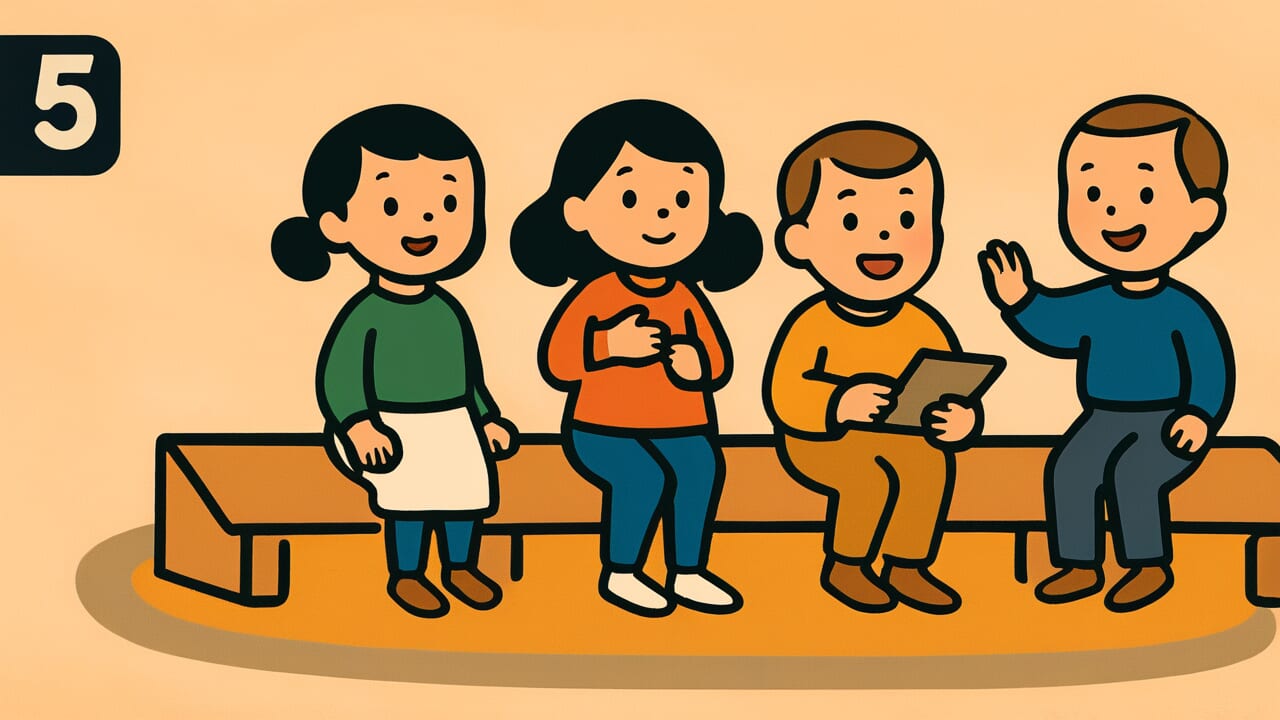How to Read “Three children is many or few”
Ōshi sukunashi ko sannin
Meaning of “Three children is many or few”
This proverb means that whether you think of children as many or few, three is just about right. It shows the wisdom that moderation is best, rather than going to extremes.
People use this saying when talking about family planning or thinking about the right amount of anything. When we feel greedy wanting more or anxious that we don’t have enough, this proverb reminds us that “moderation is best.”
Today, this saying applies beyond just the number of children. It teaches the broader lesson that “moderation is ideal.” It emphasizes the importance of balance – not too much, not too little.
Whether you’re too greedy or too cautious, the middle path leads to happiness. This proverb contains the deep insight of our ancestors about finding contentment.
Origin and Etymology
There are no clear records of when this proverb first appeared in literature. However, we can make interesting observations from the structure of the words.
The expression “many or few” seems contradictory at first. Is it many or is it few? This contradiction is actually the heart of the proverb.
It means “whether many or few,” placing both extremes side by side. This suggests “either way” or “no matter which.”
Then comes “three children.” Why three? In traditional Japanese thinking, the number three represents completeness and harmony.
Many proverbs use the number three, like “third time’s the charm” and “three years on a cold stone.” The number three appears frequently in Japanese wisdom.
This proverb likely emerged from the lived experience of common people from the Edo period onward. In both farming villages and towns, children were both a labor force and a burden to raise.
Too many children meant difficulty feeding them. Too few meant worry about the future. The practical wisdom that “about three is just right” became condensed into these simple words.
Usage Examples
- We have three siblings, and they say three children is many or few, so maybe it was just the right number
- I was wondering how many children I wanted, but since they say three children is many or few, maybe three is ideal
Universal Wisdom
The proverb “Three children is many or few” captures the eternal human struggle with knowing when we have enough.
We are creatures who constantly want “more.” When we have little, we feel anxious. When we have much, we worry about managing and maintaining it.
This contradictory psychology appears not just with children, but with money, time, relationships, and everything else. Moments when we truly feel “this is enough” are actually rare in life.
This proverb reveals the truth that no perfect answer exists. Whether many or few, the answer is “three” – a kind of acceptance that resembles resignation.
It’s the wisdom of choosing peace of mind by accepting “this is about right” rather than endlessly worrying about finding the optimal solution.
Humans suffer because we have freedom of choice, and we suffer because we hesitate. But our ancestors understood something important.
No matter what choice you make, things eventually settle at “moderate.” Too much happiness becomes a burden. Too little happiness breeds dissatisfaction.
That’s why aiming for the middle path from the start is wiser. This saying sees through to the essence of life itself.
When AI Hears This
When you view child-rearing as a resource allocation optimization problem, the number 3 occupies a mathematically interesting position.
Parents have limited resources: time, money, and mental energy. How do you distribute these between two competing goals – “quality” per child and “quantity” for the family? This creates a tradeoff relationship.
With one child, you can concentrate 100 percent of resources, but risk diversification is zero. For example, all parental expectations focus on one person.
If that child experiences setbacks, the entire family system becomes unstable. Conversely, with five or six children, resources spread too thin. You cannot maintain quality in education and individual attention.
In game theory terms, the Nash equilibrium – the stable point where no one wants to change strategy – exists between these extremes.
What’s interesting is that the number 3 becomes the psychological equilibrium point for humans who “can’t give up either quality or quantity.”
Two still feels slightly anxious. Four suddenly increases the burden significantly.
Mathematically, the intersection of the curve where marginal utility of invested resources decreases and the curve where risk diversification effects saturate appears near 3 in many cultures.
China’s one-child policy created social distortions. Even with generous Nordic support, birth rates stabilize between 2 and 3. Perhaps this reflects this mathematical structure.
Lessons for Today
This proverb teaches modern people the courage to free ourselves from the desire for “more and more.”
Modern society constantly demands “more.” Higher income, bigger houses, more experiences, more social media followers.
But this proverb quietly asks: Do you really need that?
What matters is finding your own sense of “just right.” This isn’t determined by comparing yourself to others.
Whether too much or too little, what counts is having your own standard for “about this much is good.” That leads to peace of mind.
In work and relationships alike, trying to have everything exhausts you. But doing nothing leaves regrets.
That’s why you should find your own “three children.” It’s your comfortable balance point where you can be happy without strain.
Rather than aiming for perfection, the mental space to think “this is enough” is true abundance.



Comments